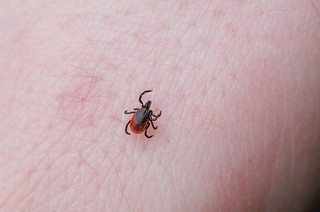Springtime Means Tick Time!
By Chris Williams on April 30, 2014.
 The Environmental Protection Agency wants to remind people that it’s time to once again think about tick protection. If you think ticks don’t really get going until the weather gets much warmer, you’re wrong.
The Environmental Protection Agency wants to remind people that it’s time to once again think about tick protection. If you think ticks don’t really get going until the weather gets much warmer, you’re wrong.
There are about 80 different tick species in the U.S. and the Centers for Disease Control has reported that seven species are capable of transmitting pathogens that cause disease in people. Lyme disease remains the number one reported tick-transmitted disease in the U.S. with about 300,000 cases reported each year. Besides Lyme, there are other important diseases transmitted to people by tick bites such as Rocky Mountain Spotted Fever, Ehrlichiosis, Anaplasmosis, and Babesiosis.
How to Keep Your Yard Tick-Free
Ticks can be found in backyards, in soccer fields, along trails, in parks, and in other outdoor areas. Ticks can also be carried into your home by your pets. You can reduce the number of ticks on your property by:
- Removing leaf litter, brush, and weeds at the edge of your lawn
- Keeping grass mowed shorter than 3 inches
- Trying to keep deer and other animals that carry ticks out of areas frequented by people. Create a nine foot buffer zone on trails frequented by deer.
- Contacting an exterminator to treat the wood/grass perimeter of your yard where ticks are found in highest numbers.
How You Can Protect Yourself and Your Family From Ticks
- Wear clothing that keeps ticks away from your skin: long pants, long sleeves, hat, gloves, and boots.
- Use an insect repellent that says on the label that it repels ticks.
- Avoid areas that ticks like such as tall grass and thick vegetation.
- After being outdoors, shower immediately using a washcloth.
- Check yourself, your children and pets daily for ticks. Juvenile ticks can be as small as a poppy seed.